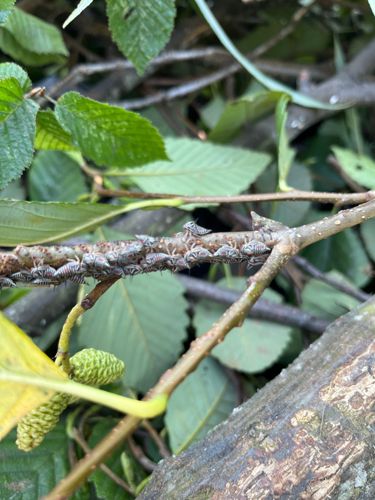Woolly Alder Aphids (nymphs)
Scientific Name: Prociphilus tessellatus
Order & Family: Hemiptera, Aphididae
Size: Nymphs are typically 1-3 mm in length, while adults can be slightly larger, up to 4-5 mm.

Natural Habitat
Woolly alder aphids infest alder trees (Alnus species) and occasionally maple trees in their complex life cycle, found in temperate forested areas and near water bodies where alders thrive.
Diet & Feeding
These aphids feed on the phloem sap of alder trees. They use their piercing-sucking mouthparts to extract sugary liquids from the plant's vascular tissue.
Behavior Patterns
Woolly alder aphid nymphs are often found in dense colonies on branches and twigs, covered in a white, waxy, wool-like substance that serves as protection. They are gregarious and move slowly. They have a complex life cycle involving two host plants: alder and maple. On alder, they are viviparous (giving birth to live young) and parthenogenic (reproducing without fertilization). On maple, they form galls on leaves.
Risks & Benefits
Risks: While generally not fatal to mature trees, heavy infestations can cause curling and yellowing of leaves, stunting of growth, and branch dieback on alder. Their sticky honeydew secretions can also lead to sooty mold growth on leaves and nearby surfaces. Benefits: They can be a food source for various predators like ladybugs and lacewings. The honeydew can also be utilized by other insects, such as ants and wasps, creating a mini-ecosystem around their colonies.
Identified on: 9/10/2025